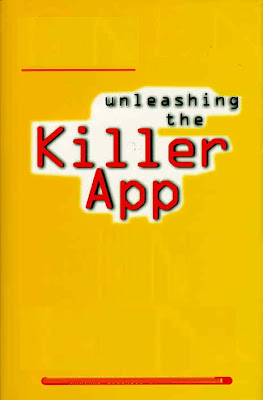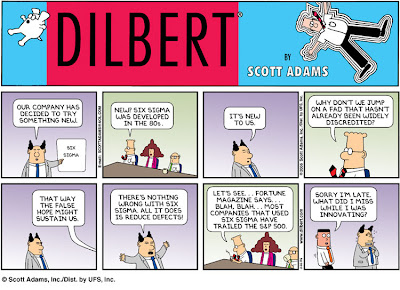 From the late 60's to the early 80's, the Red Wings went on a losing slump in which they only made the playoffs twice, winning one series.
From the late 60's to the early 80's, the Red Wings went on a losing slump in which they only made the playoffs twice, winning one series.
In 1983, the Red Wings organization changed to a new owner who brought his own management team. Their first set of objective was to assess their global settings and determined what was their overall philosophy in terms of organizational leadership, talent, game style. Once they built and connected to their strategic overview (Tangible Vision). The Red Wings used their Tangible Vision as their guide and started to search for the best global hockey talent that fit their game philosophy of puck control, speed teamwork and quickness. They immediately began to win. Between 1988 to present, the Red Wings won four Stanley cups, six Conference championships and 14 Division championships During 2004-2005 season, the economic state of the US professional hockey game changed. The Red Wings and other hockey teams were forced to modify its contracts system and displaced some of its high-priced players. Concurrently, they were also forced to re-think their gameplay approach. In some of their games, they noticed that the stronger opponents were out-muscling them in close games.
The Red Wings management decided to maintain their emphasis on puck control and game speed. However, they adjusted their game by focusing its European players to play more physically aggressive and go into corners after pucks. It worked quite well that they won the Stanley Cup in 2007-2008 and were playing in the NHL Stanley Cup Finals this past season.#
In NHL, Detroit Turns to Imports As Motor City Slumps, Red Wings Thrive With European Players; Swedes Rejoice
By REED ALBERGOTTI
As the ailing Motor City rallies around the Detroit Red Wings, who face the Pittsburgh Penguins on Friday in Game 7 of the Stanley Cup Finals, there is one tiny bit of irony: Michigan’s top team is powered more than ever by European imports.
Less than half the Red Wings’ roster comes from North America. The rest, and most of the team’s top talent, hail from Sweden, the Czech Republic, Russia and Finland. In all, five players are from the U.S. Years ago, when the Big Three auto makers were allowing overseas competitors to pull ahead, the world was getting flat inside Joe Louis Arena. Starting in the 1980s, the Red Wings began building a dynasty by recruiting talent from Russia and adopting a new, European style of hockey.
The Red Wings’ success—they have won four Stanley Cups since 1997–paved the way for the rest of the league to follow. Today 30% of the NHL’s players hail from outside North America. The Red Wings are still the most international team, with 54% of their players hailing from overseas. This season, more than 80% of the Red Wings’ goals were scored by players born outside North America, up from 41.5% in the 1996-1997 season.
At the same time, the pool of available talent at home seems to be thinning. In Michigan, one of the nation’s top junior-hockey states, the struggling economy—and the high cost of junior hockey—is taking a toll on participation. USA Hockey says youth participation in the state has fallen 14% in the past three seasons.
In many ways, the Red Wings are a case study in harnessing globalization. Team scouts travel the world in search of new talent and new ideas. Instead of an employee-training program, the team uses its farm team, the Grand Rapids Griffins of the American Hockey League, to develop talent.
“It’s a global sports market now,” says Michael Maroone, the chief operating officer of AutoNation and part owner of the NHL’s Florida Panthers. “Detroit was certainly out in front on the hockey side. It reminds me of Toyota, honestly.”
Giving Away Cars
In the 1980s, Red Wings owner Mike Ilitch had to give away cars at every home game to persuade fans to watch the beleaguered “Dead Things,” which hadn’t won a championship since 1955.
Team officials Jimmy Devellano and Ken Holland set out on a radical mission: to draft and sign European players who played a brand of hockey completely different from what was common in North America. The Wings drafted Russian Sergei Fedorov and Swede Nicklas Lidstrom in 1989 . Players then switched to a cleaner, faster, less pugnacious puck-control style of hockey that eventually led the team to championships in 1997, 1998 and 2002.
After the lockout in 2004-2005, the team found itself in a bind. It had a payroll of $75 million that had to be shrunk to $39 million. To make room for the new salary cap, Detroit chose fast and talented European players and got rid of many of its beloved North American stars.
The team had mild success, but was knocked out of the playoffs in the first round by Edmonton in 2006. Next the team considered trading in some of its European stars for North Americans who could hit and fight and were more popular with the fans. “Maybe a little more North American—away from our philosophy a bit,” says Mr. Holland.
After much discussion, the team decided to stick with its original plan and instead teach its European players to play more physically and go into corners after pucks. It worked. The team won the Stanley Cup by 2008 and is now one game away from winning two years in a row with a team buttressed by Europeans like Sweden’s Johan Franzen and Russia’s Pavel Datsyuk. Together they won the team another championship last season. “You’re not really going to Europe looking for toughness,” says Mr. Holland.
The NHL and the Red Wings say they’re making an effort to boost development programs in the U.S. and North America. This past fall, the NHL upped the money available to USA Hockey, the country’s governing body, to $8 million from $1 million. In part, the money is going to support initiatives like the American Development Model, a national set of standards based on international best practices in developing athletic talent. The program costs about $2 million annually.
No matter how the team is composed, Detroiters show no lack of support for the Red Wings—and have proven especially devoted this season.
“You would think if there was a town that would not grasp on to an international team, it might be Detroit, because of the ‘buy American’ thing and patriotic feelings,” says Michael Robinet, vice president of vehicle forecasts for consulting firm CSM Worldwide. “It shows Detroit is willing to think outside of the box and has embraced this team.”
John Cooney, a stay-at-home dad from Livonia, Mich. Says he’s all for the Red Wings’ foreign roster. “I think that it’s important to search the four corners of the earth for talent,” he said.
Auto-industry experts are quick to note that the auto makers are not by any means unaware of foreign markets, especially Europe. General Motors says it actually has more employees outside the United States than in, and that it sells more vehicles abroad. Many global suppliers have added a presence in Detroit, bringing in workers from all over the world and making the city more global.
The only difference is the level of success they’ve had bringing European ideas to North America.
“Detroit has had to move from its domestic focus of 30 to 40 years ago to one where their survival depends on going global,” says Mr. Robinet of CSM. “That’s how the Red Wings saw things before many, many other teams,” he says.
Bruce Belzowski, assistant research scientist at University of Michigan’s Transportation Research Institute says the auto makers would have certainly taken a page from the Detroit Red Wings, had it been that simple. “I think it’s a lot easier to go out and scout for four or five good players than it is to turn huge companies around.”
Global Auto Makers
Shawn Morgan, spokeswoman for Chrysler Group says that in a global marketplace, the auto industry has been working hard to be prepared, “which is very similar to what the Wings have done,” she says. “Just like the Ilitches have made a great team, I think we’re putting together a great team.” A Ford spokesman says nobody is more supportive of the team than the company’s Swedish employees. “We’re an international auto maker based in Detroit,” he says.
The Red Wings, for their part, say they hope a Stanley Cup would serve as a respite from a wave of terrible news. “Times are difficult in Detroit and the State of Michigan,” a spokesman said. “We’re just trying to do our part to give the fans something to be proud of and to feel good about.”
Michigan governor Jennifer Granholm puts a different spin on the issue. “Having Swedish roots myself, I get a kick out of the Red Wings having Swedes on their roster—nearly a third of their lineup,” she says. “The Wings are a diverse team, and that diversity is reflective of Michigan.”
—Andrew Grossman contributed to this article. Write to Reed Albergotti at Reed.Albergotti@wsj.com
http://online.wsj.com/article/SB10001424052970204482304574221962202473816.html#

















